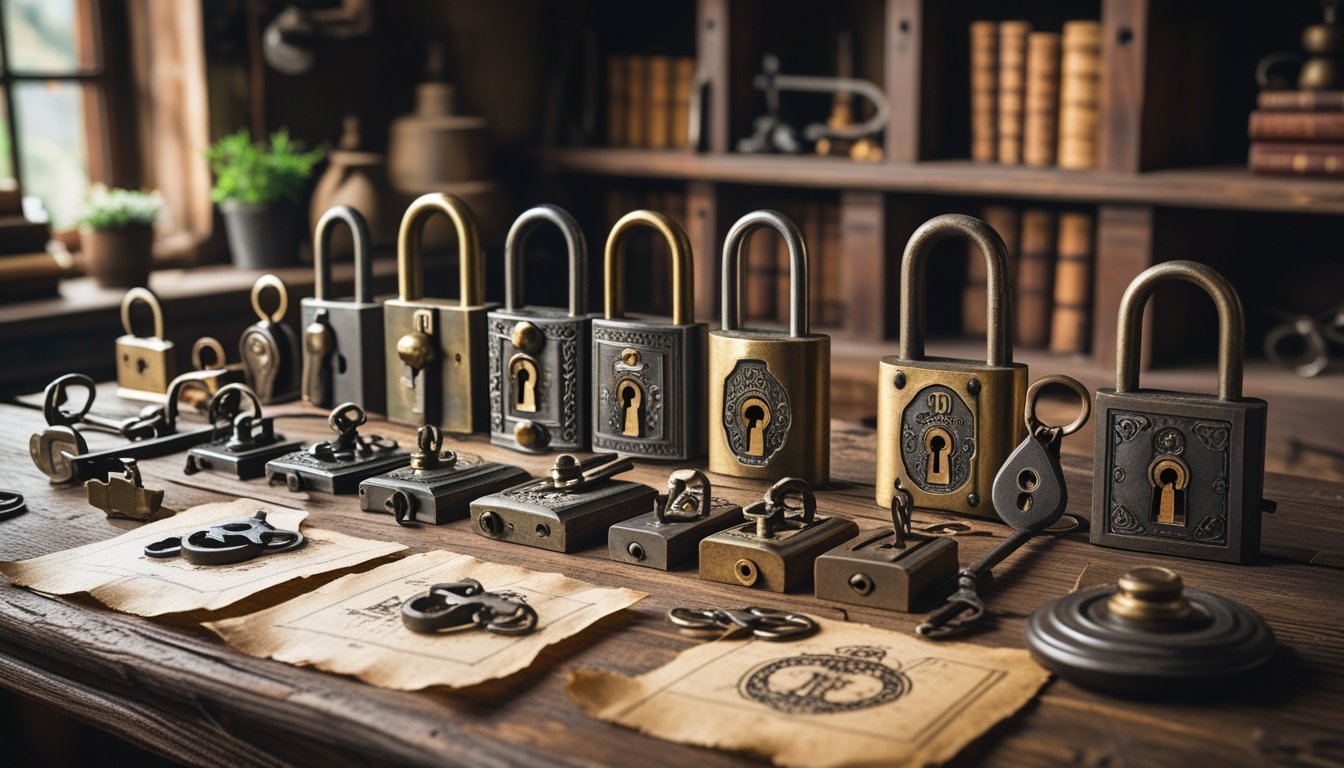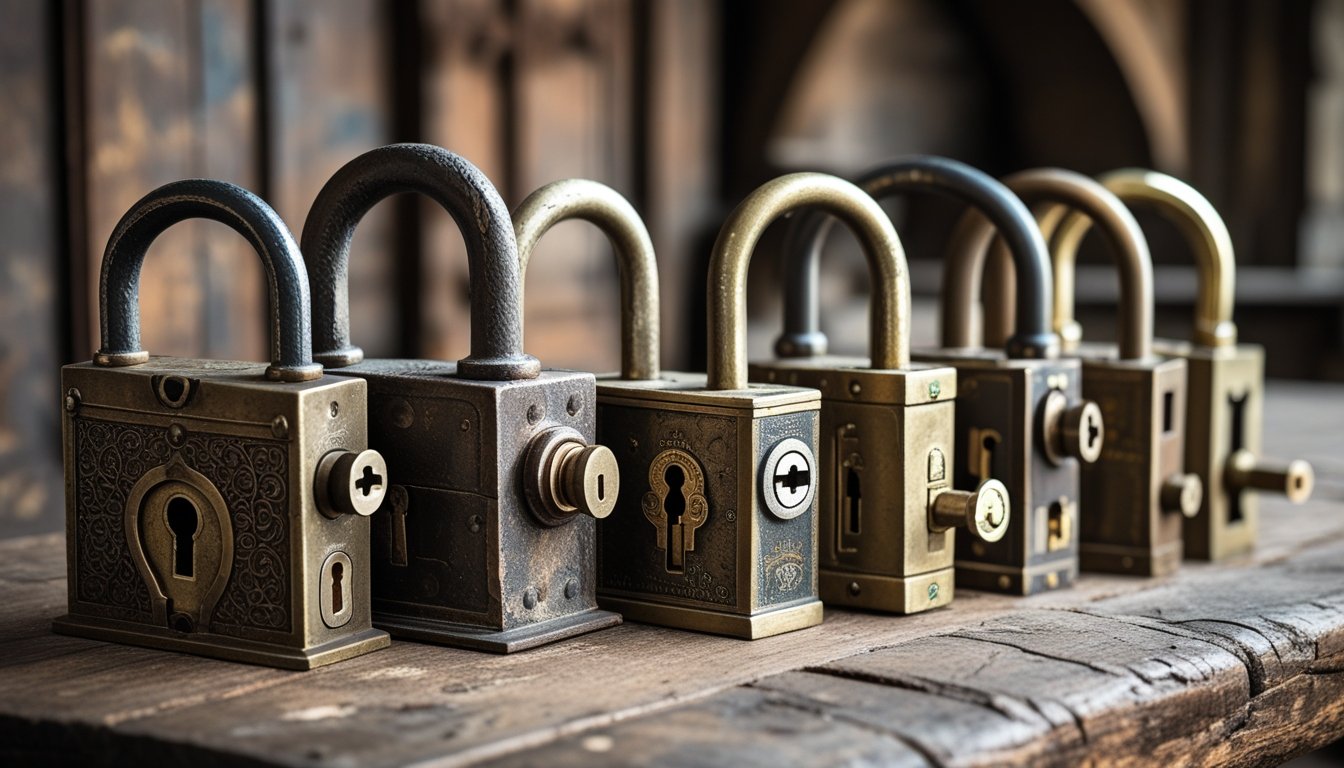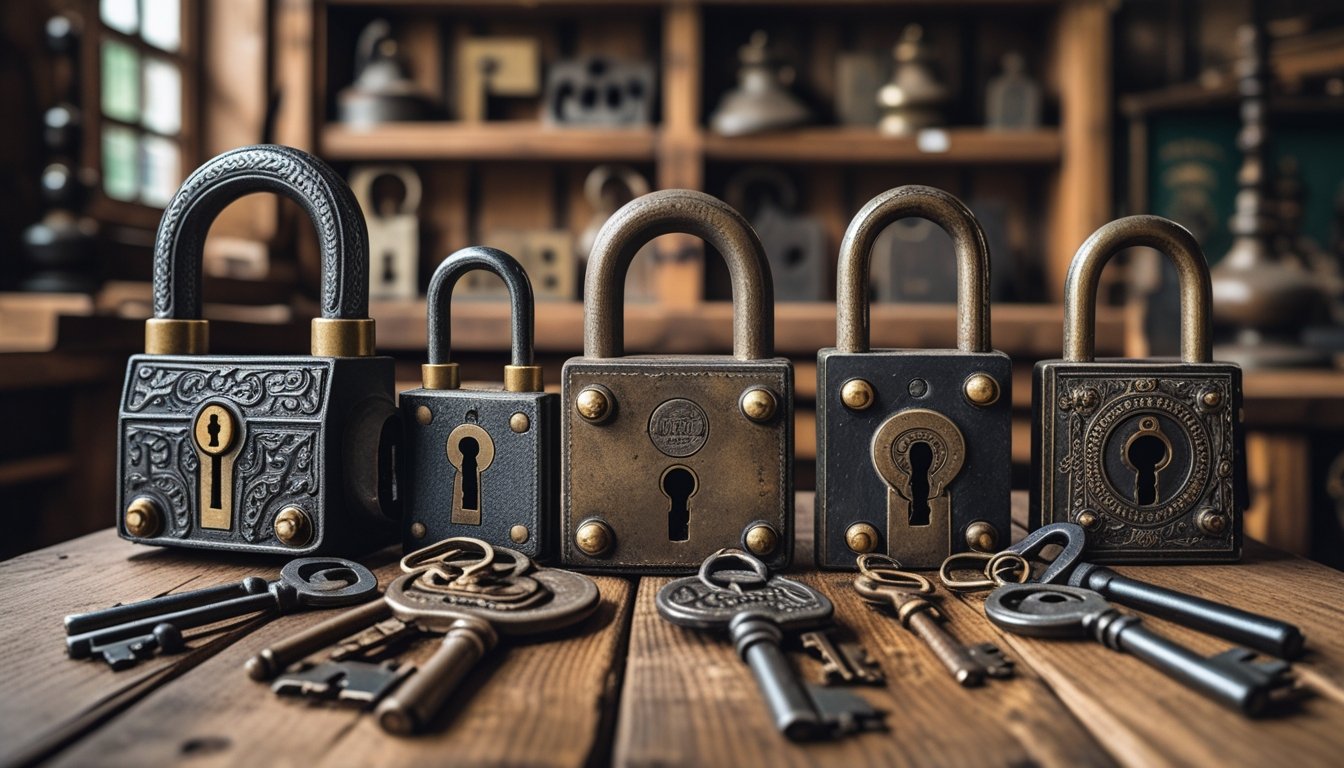Late updated: 19 Oct 2025 10:10
Written by: Elena Prescott
Exploring Traditional Lock Curiosities in the UK: A Historical Insight
Locks offer a fascinating glimpse into the confluence of tradition, craftsmanship, and security that has long been a staple in UK culture. From the medieval wooden tumblers to the solid brass mechanisms that decorated the Victorian era, these traditional lock curiosities are more than just functional; they are historical artefacts that have safeguarded our heritage. Their unique designs and intricate mechanisms provide an insight into the rich tapestry of British engineering and innovation.

Our exploration into these locks unveils not just their technical functionalities but also their contribution to the architecture of classic UK homes. The evolution from these antique marvels to today’s smart innovations highlights a journey that mirrors societal progress and the increasing need for enhanced security measures. This article will guide you through the fascinating world of traditional lock curiosities, offering a unique perspective on British history through the lens of lock-making.
By engaging with the stories and craft behind these locks, we connect with a past where security was an art form. This journey through time, from quaint workshops crafting locks by hand to the bustling industry it is today, promises to intrigue anyone interested in the heritage of this indispensable craft.
Key Takeaways
- Traditional locks blend craftsmanship with security.
- Locks evolved from simple mechanisms to smart technologies.
- Lock history offers a unique perspective on British heritage.
Traditional Lock Curiosities: Unique Features and Historical Significance

In the UK, traditional locks have a storied past, showcasing extraordinary craftsmanship and innovation. From famed historical locks to the intricate artistry of metalwork and peculiar mechanisms, each element reveals a fascinating glimpse into our rich history of security and invention.
Famous Historical Locks and Their Stories
Across the UK, numerous locks have left their mark through history. One notable example is the lock at the Tower of London, used during medieval times to secure valuable state secrets and treasures. This lock exemplifies the vigilance of security practices in past centuries.
Another notable feature is the lock of Westminster Abbey, which played a pivotal role during coronation ceremonies. Both locks exhibit a backdrop of storied tradition, demonstrating the early advances in locksmithing techniques.
Ornate Metalwork and Decorative Craftsmanship
Traditional locks in the UK are renowned for their ornate metalwork, often reflecting the artistic tendencies of their time. Blacksmiths crafted intricate details, transforming functional locks into decorative pieces.
During the Victorian era, the artistry saw locks adorned with elaborate scrollwork and floral motifs, exhibiting the merging of aesthetics and security. Such craftsmanship continues to be celebrated, highlighting the skill and dedication inherent to this trade.
Unusual Lock Mechanisms and Inventions
The ingenuity of British locksmiths is evident in the unusual lock mechanisms they've devised. The Bramah lock, introduced in the late 18th century, is famed for its complex design and was considered unpickable for many years.
The Chubb detector lock, another invention, advanced security by alerting users if someone tried to tamper with it. These inventive forms showcase the evolving landscape of locks as responses to growing demands for enhanced security measures.
The Evolution of Locks in the UK: From Antique to Cutting Edge

Locks have played a vital role in securing our possessions and ensuring privacy throughout history. In this section, we explore the transformation of locking mechanisms from ancient devices to modern smart locks.
Ancient and Medieval Lock Technologies
The history of locks in the UK stretches back thousands of years. Early devices often relied on simple wooden mechanisms. As time progressed, metal locks began to replace these early versions, offering improved security.
Locksmiths of the medieval era were artisans who crafted intricate wrought-iron locks featuring decorative elements. Many of these devices relied on large keys to operate, reflecting the craftsmanship of the period. Innovations continued into the Middle Ages, with the introduction of spring mechanisms improving security. These developments marked a turning point in lock technology, setting the stage for more complex systems that followed.
The Art and Profession of the Locksmith
Locksmithing is an ancient profession that has evolved alongside the technologies they work with. Traditionally, locksmiths not only designed locks but also manufactured them by hand, demonstrating a unique combination of skills.
Their role as artisans of security devices has expanded over time. In the modern era, locksmiths are also security consultants, advising on both mechanical and electronic solutions. With the rise of digital security, today's locksmiths must stay knowledgeable about smart lock technologies, integrating traditional skills with modern innovation to meet diverse security needs.
Collecting and Restoring Antique Locks
Antique locks offer a fascinating glimpse into the past, showcasing the ingenuity of previous generations. Collectors are drawn to both their aesthetic appeal and the challenge of restoration.
Restoring these historic pieces requires a deep understanding of traditional practices. Enthusiasts often must source vintage materials or employ techniques such as re-casting to replace missing parts. This meticulous work preserves our heritage, allowing us to appreciate the evolution of security technologies over centuries. For many, the combination of history and craftsmanship makes antique locks a cherished collectible.
Transition From Mechanical Locks to Smart Solutions
The evolution from mechanical to smart locks represents a significant leap in security technology. Mechanical locks, which dominated for centuries, offered reliable security but lacked the adaptability of modern systems.
With the advent of digital technology, electronic and smart locks have revolutionised the industry. These systems offer features such as keyless entry, remote access, and integration with other smart devices. By continuously adapting, we can enhance security measures in response to evolving threats. This transition underscores the dynamic nature of lock technology, blending traditional mechanisms with cutting-edge innovations to meet our current security needs.
Frequently Asked Questions

Our exploration of traditional lock curiosities in the UK covers ancient mechanisms, influential designs, and the evolution of lock-making through history. We also highlight notable locksmiths and the remarkable role these locks played in society and economy.
What are some examples of ancient locking mechanisms found in the UK?
The UK has been home to various intriguing ancient locks. Notable examples include wooden locks and pin tumbler mechanisms unearthed from historical sites. These early designs highlight the ingenuity of past societies in securing their possessions.
How did the design of traditional British locks influence modern security?
Traditional British locks have profoundly influenced modern security through innovative designs like lever locks, which continue to inspire contemporary lock engineering. Such designs introduced principles that form the basis of secure locking systems used today, merging old craftsmanship with new technologies.
Can you describe the evolution of lock-making in British history?
Lock-making in Britain saw remarkable changes starting from wooden locks to sophisticated metal designs during the industrial revolution. Over centuries, workshops innovated to meet increasing demands for security, reflecting societal advancements. This evolution paved the way for today's cutting-edge security measures.
Are there any notable locksmiths from the UK whose work has been pivotal in the development of locks?
Several locksmiths in the UK have made significant contributions to the craft. Figures like Robert Barron, who invented the double-acting tumbler lock, played pivotal roles in advancing lock technology. Their legacy continues to shape the standards of modern lock-making.
What role did traditional locks play in the social and economic fabric of historical Britain?
Locks were integral to the social and economic landscape of historical Britain. They provided essential security for properties and valuables, fostering a sense of safety. Additionally, the lock-making industry contributed significantly to local economies, supporting artisans and tradesmen throughout the country.
Where can one view collections of historic locks in the United Kingdom?
The UK hosts several collections of historic locks for enthusiasts and scholars. Notable locations include the British Museum and regional heritage centres, where one can explore displays showcasing the fascinating history and development of locks through time.
